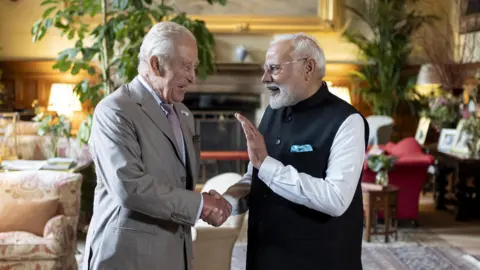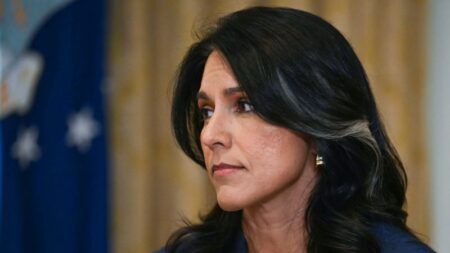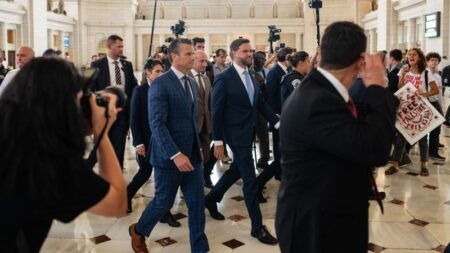King Charles recently convened with Indian Prime Minister Narendra Modi at Sandringham, marking a significant moment in diplomatic relations following the signing of a comprehensive trade agreement between the United Kingdom and India. This agreement, which had been in the works for three years, aims to bolster economic ties between the two nations and is expected to have a considerable impact on various sectors, facilitating cheaper exports and imports.
As part of this new trade deal, UK products such as cars and whisky will see lowered tariffs when entering the Indian market. Conversely, products from India, including textiles and jewellery, will also benefit from reduced tariffs when exported to the UK. The agreement is projected to enhance multibillion-pound export opportunities for both economies. Business Secretary Jonathan Reynolds, addressing concerns from critics who argued that the deal could undermine British workers, reassured that the deal does not provide any unfair advantages for Indian workers over their British counterparts.
Prime Minister Modi’s visit to Sandringham was particularly notable not only for the economic discussions but also for the ceremonial gesture of gifting King Charles a tree intended for planting in the autumn season. This symbolic act aligned with Modi’s environmental initiative that encourages the planting of trees in tribute to mothers, reflecting a shared commitment to environmental sustainability.
The trade deal, described by Sir Keir Starmer, the UK Prime Minister, as the most significant post-Brexit agreement, has received mixed reactions. Critics fear that the extended social security arrangements could create disparities, leading to potential job losses for British workers. However, Reynolds categorically denied such assertions, emphasizing that the agreement will not disadvantage local labor forces.
In a broader context, the deal will create an estimated 2,200 jobs across the UK, thanks to Indian firms expanding their operations. Furthermore, the agreement proposes new frameworks for cooperation in various domains including defense, education, and climate policy. One notable aspect is the enhanced intelligence-sharing agreements aimed at tackling organized crime and corruption, which speaks to the need for comprehensive security collaboration in both nations.
The implications of the free trade agreement extend beyond mere economic considerations. Modi characterized the pact as a “blueprint for shared prosperity,” envisioning improved access for Indian goods, such as textiles and gems, in British markets, while UK products like medical devices will become more accessible and affordable in India.
Despite the optimistic outlook from both leaders, not all responses have been favorable. The opposition has expressed reservations about the sustainability of British jobs and the quality of the deal, with some political figures even suggesting that it reflects the inadequacies of post-Brexit negotiation strategies. The agreement must still pass through the UK Parliament and is anticipated to take up to a year before it becomes fully effective.
A notable feature of the trade negotiations has been the discussion surrounding social security contributions for workers temporarily seconded between the two countries. Under the new terms, Indian and UK workers will only pay contributions in their home countries, rather than both nations, addressing concerns over redundancy and tax pressures that might arise from dual contributions.
In conclusion, the India-UK trade deal represents a major step in strengthening bilateral relations post-Brexit, despite ongoing debates about its implications on domestic employment and economic stability. The move has the potential to enhance trade flows and create jobs, but careful monitoring and political dialogues will be essential to ensure that the benefits are equitably distributed among stakeholders in both countries.











